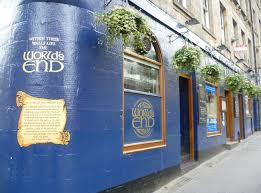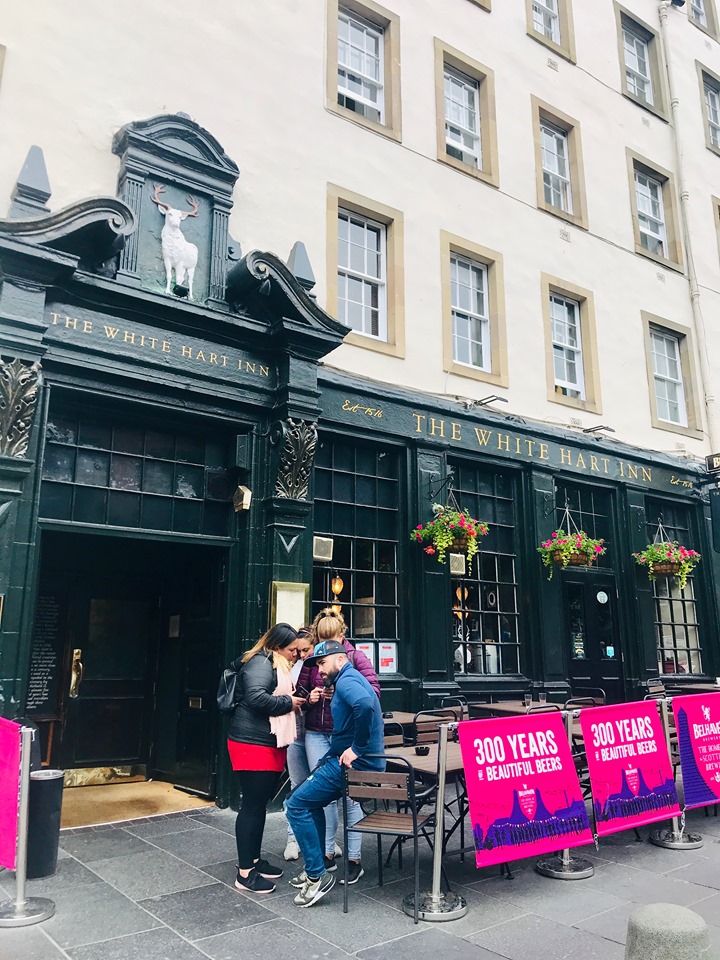Edinburgh is a city well known for its rich history whether that be through its architecture, the iconic figures who changed society or through the dark winding streets. Today you can find reminders of those historic events and people of the past.
Pubs and restaurants are places which hold many tales between their walls – usually tales of shady individuals it must be noted! Many of those which hold these stories can be found on or just off the Royal Mile with many of these tales being told on our very own history and ghost tours.
Historic Edinburgh pubs
Deacon Brodie’s Tavern
If you join us for our Secrets of the Royal Mile tour look out for Deacon Brodie’s Tavern, chances are, we'll point it out to you anyway!
William Brodie was born in 1741 and was a deacon of the Guild of Wrights (carpenters), hence his more commonly known name of Deacon Brodie. He was a well-respected man and a good craftsman. However, he developed a gambling addiction and was known to enjoy a drink or two.
Brodie’s line of work meant that he had access to some of the richest houses in town. This led to him buying a mould in which he could make copies of keys. He would then used these copied keys at night to burgle the houses he had been working in during the day! It was said, he started this sideline in order to pay his debts but also, just because he simply enjoyed the thrill. Brodie was eventually caught in 1788 and hung for his crimes in the Lawnmarket area of Edinburgh. The event gathered the largest crowd that local residents had seen in living memory. This story famously went on to inspire Robert Louis Stevenson to write ‘Jekyll and Hyde’ almost 100 years later. Be sure to check out the very attractive signage on Deacon Brodie's Tavern too - it was created with the dual life of its namesake in mind.
The World’s End
Following the defeat of the Scottish Army at Flodden Field, the city wall of Edinburgh was fortified and the Flodden  Wall was built. The people of Edinburgh could freely leave the city whenever they wanted but returning was another matter! Re-entering the city through the city walls meant paying an entrance fee. Of course, there would be some people who could not afford this re-entry fee and thus this city gate soon became known as “The World’s End” for those who could not leave.
Wall was built. The people of Edinburgh could freely leave the city whenever they wanted but returning was another matter! Re-entering the city through the city walls meant paying an entrance fee. Of course, there would be some people who could not afford this re-entry fee and thus this city gate soon became known as “The World’s End” for those who could not leave.
The gate of the wall was situated just outside what is now the pub’s main entrance. You'll notice this area of the footpath and road is marked by brass plaques in the cobbles.
The World's End is a very popular local pub and restaurant today, it's one you'll hear about on our Treasures of the Old Town walking tour of Edinburgh.
White Hart Inn
In the Grassmarket you will find the White Hart Inn. This pub takes its name from a miraculous event that took place in Edinburgh in 1128. The story goes that King David 1 of Scotland was out hunting on the Feast Day of the Holy Rood (Scots for Holy Cross). During this hunting trip he came across a rare white stag which he began to  chase down. During this chase, King David fell off his horse and was faced with the stag ready to charge at him. King David prayed to God, asking him to spare his life when all of a sudden a flaming cross appeared between the stag’s antlers and the King survived. Grateful for God sparing his life, King David built a shrine upon the site of the miracle and thus Holyrood Abbey was born - the ruins of which you can still see today. You can hear more about this tale, the Abbey and visit Holyrood Palace on our Treasures of the Old Town tour.
chase down. During this chase, King David fell off his horse and was faced with the stag ready to charge at him. King David prayed to God, asking him to spare his life when all of a sudden a flaming cross appeared between the stag’s antlers and the King survived. Grateful for God sparing his life, King David built a shrine upon the site of the miracle and thus Holyrood Abbey was born - the ruins of which you can still see today. You can hear more about this tale, the Abbey and visit Holyrood Palace on our Treasures of the Old Town tour.
It's rumoured that notorious murderers Burke and Hare were frequent visitors here, as was Robert Burns. Our national poet stayed in the pub in 1791 on his last visit to Edinburgh. Here he met his lover, Nancy Macklehose or Clarinda, who was the inspiration behind ‘Ae Fond Kiss’. Some of his poems can be found painted on the pub’s wooden rafters.
The Last Drop and The Sheep Heid Inn
The last two pubs, despite being in completely different places, have an impressive link.
Firstly, The Last Drop in Grassmarket is a pub with a particularly macabre name. It is a reference to the last hanging that happened in the Grassmarket which was of a woman called Maggie Dickson, often known as ‘Half-Hangit Maggie’.
She was a young married mother and fish hawker. After the birth of their second son, Maggie’s husband deserted her. Distressed, she set out for a fresh start and found this in the border town of Kelso. She began working in a local inn and grew close to the landlady’s son William. Eventually, Maggie found herself pregnant; bad news as having a child out of wedlock was a terrible thing at this time. She decided to keep her pregnancy a secret. However, her attempts at disguising the pregnancy meant that the child was born prematurely and sadly did not survive. Maggie hid the body by the River Tweed but it was discovered not long later and traced to Maggie. She was charged with ‘concealing her pregnancy’ which was a criminal offence in the 18th Century. She was returned to Edinburgh for trial and was found guilty as charged and thus sentenced to be hanged in the Grassmarket on 02 September 1724.
After the hanging her body was put in a coffin to be taken back to Musselburgh to be buried. Along the way, the funeral party stopped at The Sheep Heid Inn at Duddingston, the oldest pub in Scotland, for refreshments. On return to the coffin they heard moans and groans and opened the coffin to discover that Maggie was alive! This was decided as an Act of God and Maggie was allowed to live out her days in Edinburgh. You can hear all about this story nightly ghost tour Doomed, Dead and Buried.



